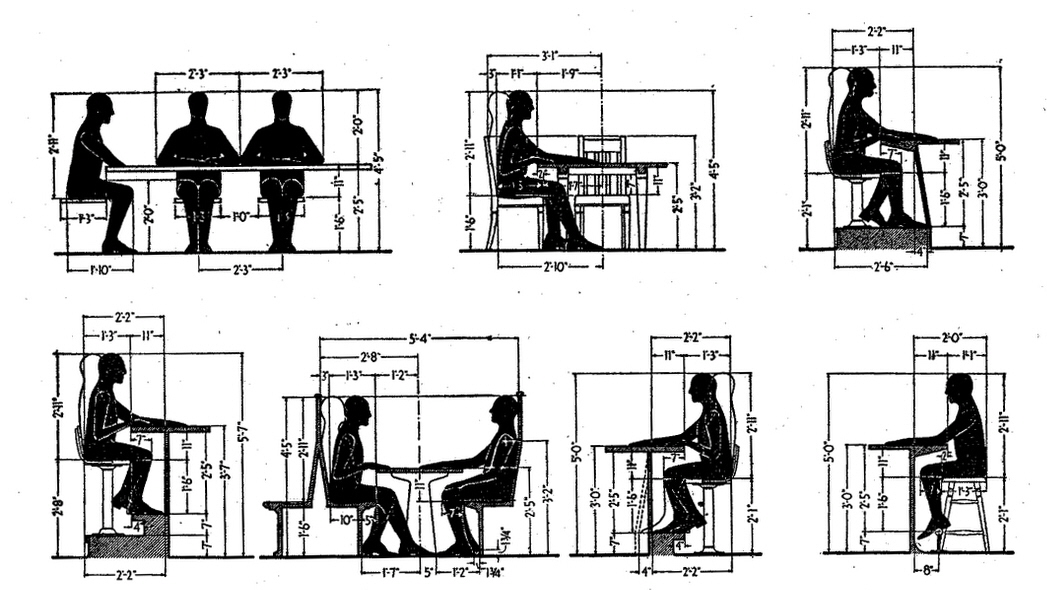
Reference: Common Dimensions, Angles and Heights for Seating Designers
If you're designing a chair, sofa, stool, bench, booth or banquette, start here
Furniture dimensions don't come out of the air. They come out of heavy research that, thankfully, a lot of people have already done for us and written books on; if you're a designer, you ought have a copy of one of these books (see bottom of this entry). While these reference bibles of human dimensions haven't yet been updated to account for us supersized Americans, they still provide a good jumping-off point for determining rough dimensions, angles and heights.
But maybe you're designing something at the studio and the book is back in your dorm, or maybe you're at your office desk and the book is sitting on a shelf in the room occupied by that creepy new intern you're trying to avoid. Well, have no fear, we've gathered some basic reference info here that you can bookmark and refer to in a pinch.
Basic Chair
For those designing a basic chair, Wood Magazine has a great article called "Must-have measurements for comfortable seating" that draws on furniture industry guidelines to provide ideal figures. (Well, ideal if you're a 5'10" male.)
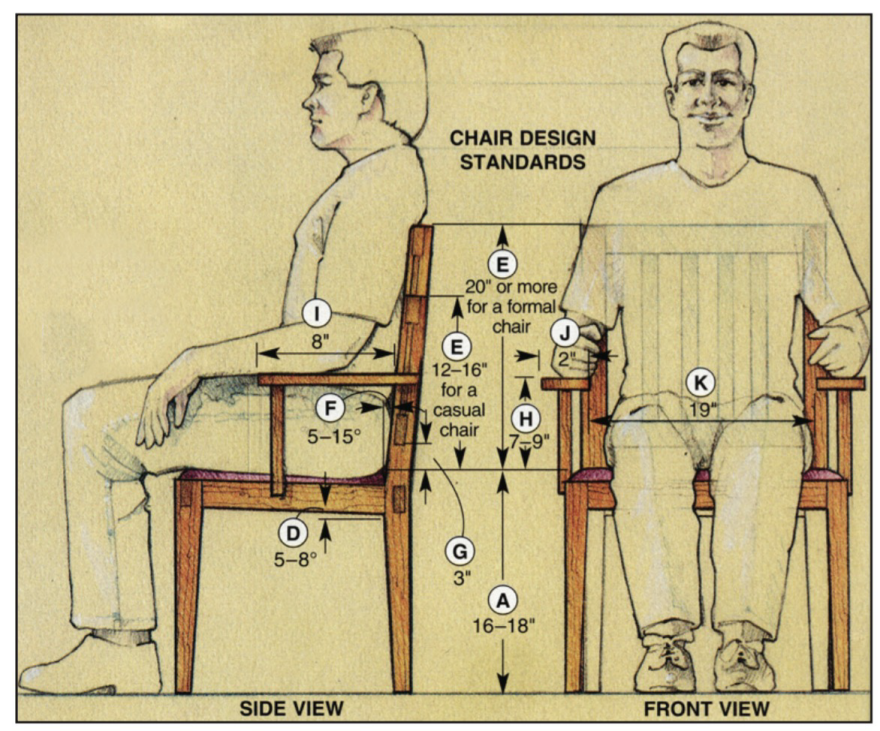 Image by Wood Magazine
Image by Wood Magazine 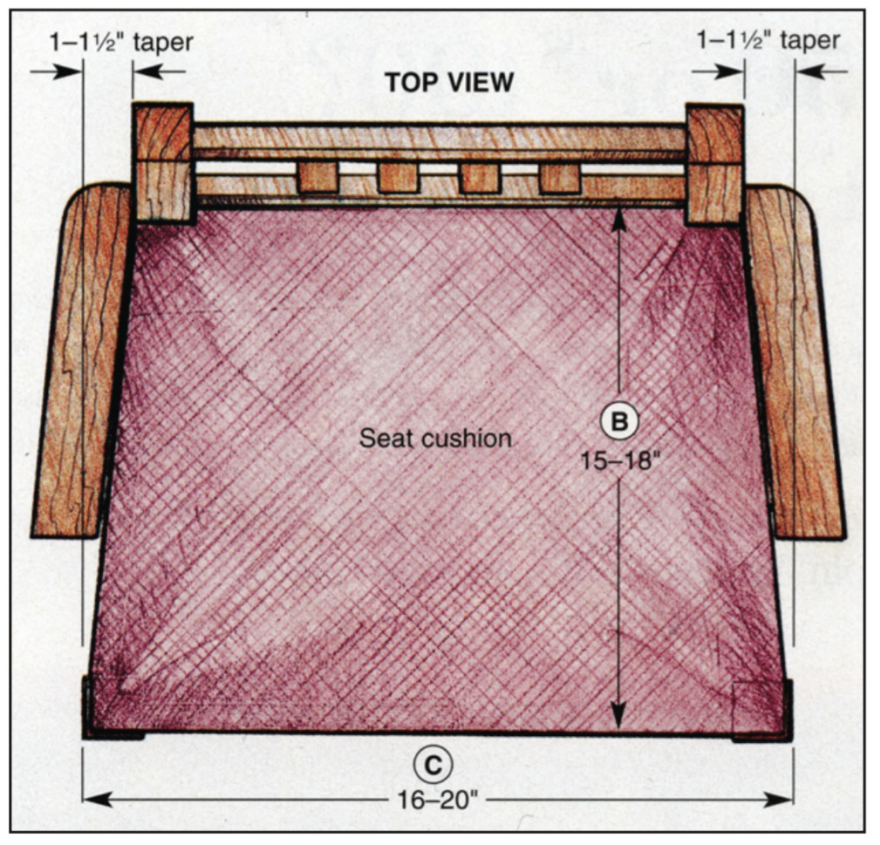 Image by Wood Magazine
Image by Wood Magazine To read the details behind those letters called out on the drawings, read the original article here.
Sofa/Couch/Easy Chair
Maybe you're designing something a little loungier, like a sofa or easy chair. A feature story in Futon Life (wow, there really is a magazine for everything) provides some basic figures for both level-bottom and tilted-bottom reclining.
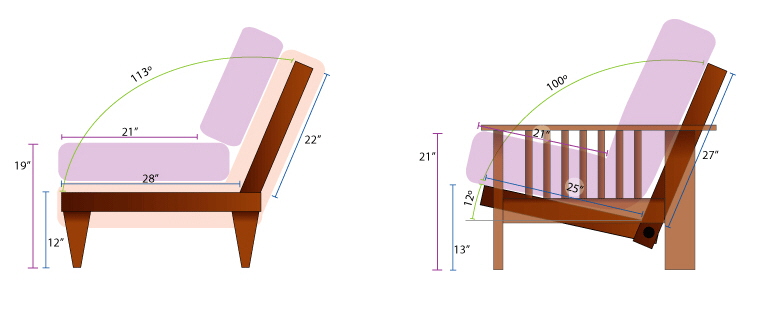 Image by Futon Life
Image by Futon Life Along these lines there is also this frustratingly unattributed image floating around the interwebs, which I assume was ripped off of Dreyfuss or perhaps Niels Diffrient's now-unaffordable Humanscale books.
Office Chair & Workstation
Office solutions provider Allsteel has combed through data from BIFMA (the trade association for Business and Institutional Furniture Manufacturers) to produce Ergonomics and Design: A Reference Guide [PDF]. In it you'll find images like the following:
 "Hmm. Every time I try typing without a keyboard, the screen just stays blank."
"Hmm. Every time I try typing without a keyboard, the screen just stays blank." Enter a caption (optional)
Enter a caption (optional)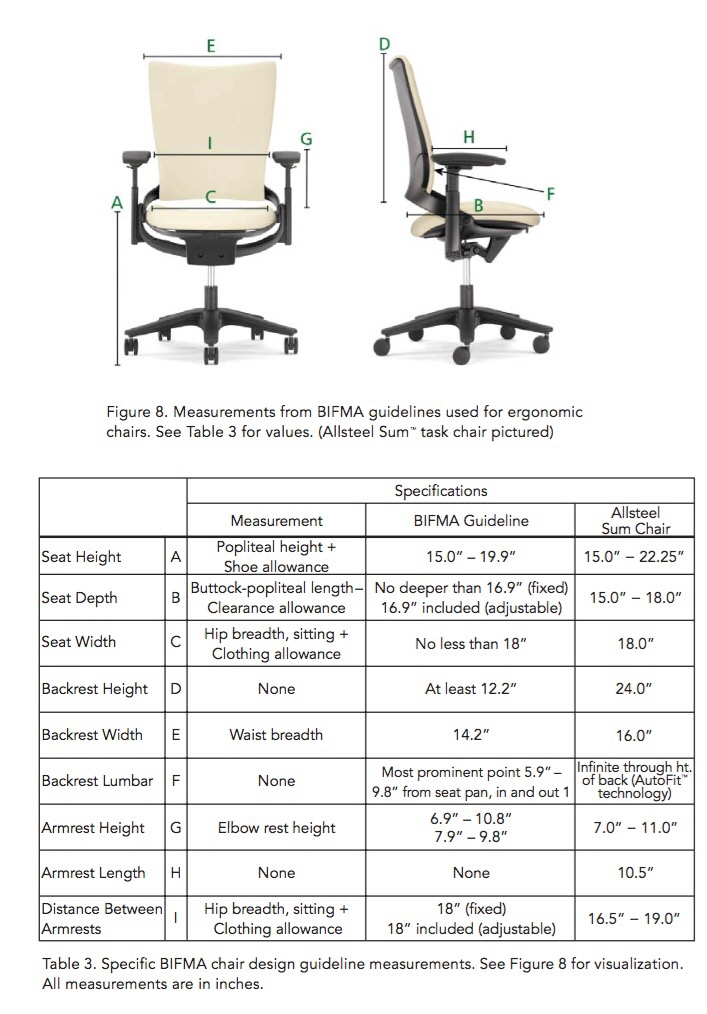 Enter a caption (optional)
Enter a caption (optional)For a more coherent set of workstation dimensions including the numbers for seating/worksurface on the same page, you may want to refer to the drawings below, from Ernest Irving Freese's Architectural Record. However, be aware: There are no measurements for computer monitors in these drawings—because they were developed way back in 1932. (While it's not indicated on the drawing, all of these figures in the illustrations are starving because it was the Great Depression.)
Bar/Restaurant Seating
If you've scored your first commission to design a bar or restaurant, or if you're looking to design a similar set-up for a domestic or office situation, these images from an Americans with Disabilities Act pamphlet may prove useful:
 Enter a caption (optional)
Enter a caption (optional) Enter a caption (optional)
Enter a caption (optional) Enter a caption (optional)
Enter a caption (optional)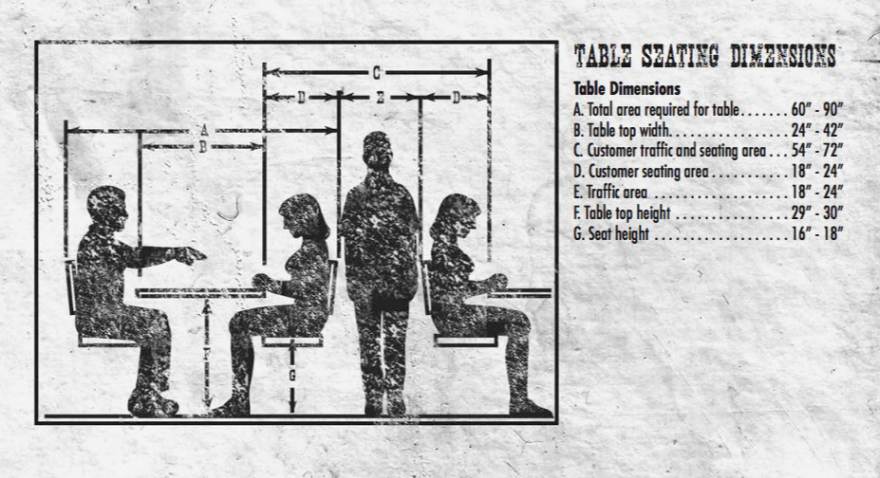 Enter a caption (optional)
Enter a caption (optional) "Please manicure my fingernails"
"Please manicure my fingernails" "I just saw you manicure that other guy's fingernails. Can you manicure mine too?"
"I just saw you manicure that other guy's fingernails. Can you manicure mine too?"Custom Furniture
If you're designing a bespoke piece of furniture for a single client, their body is the only one you need to worry about, never mind the 95th percentile. In that case, here are the measurements you'll need to take. (The image is from a 1962 U.S. Department of Health, Education and Welfare pamphlet called Weight, Height, and Selected Body Dimensions of Adults [PDF]. It contains figures that are probably outdated, but this diagram will remind you what to measure.)
 Enter a caption (optional)
Enter a caption (optional)Rough Overall Dimensions
If you only need the rough dimensions of a chair--for example, if you're just banging out some quick mock-ups to populate a CAD environment and you'd like the scale to be close--you might find the following image helpful. (Again, the image is recirculating on Tumblr with no attribution.)
Books
If you look hard enough, you'll find some websites are blatantly posting scans of the books mentioned below. For those of you that would rather legally purchase them, here you go:
 Enter a caption (optional)
Enter a caption (optional)Human Dimension & Interior Space
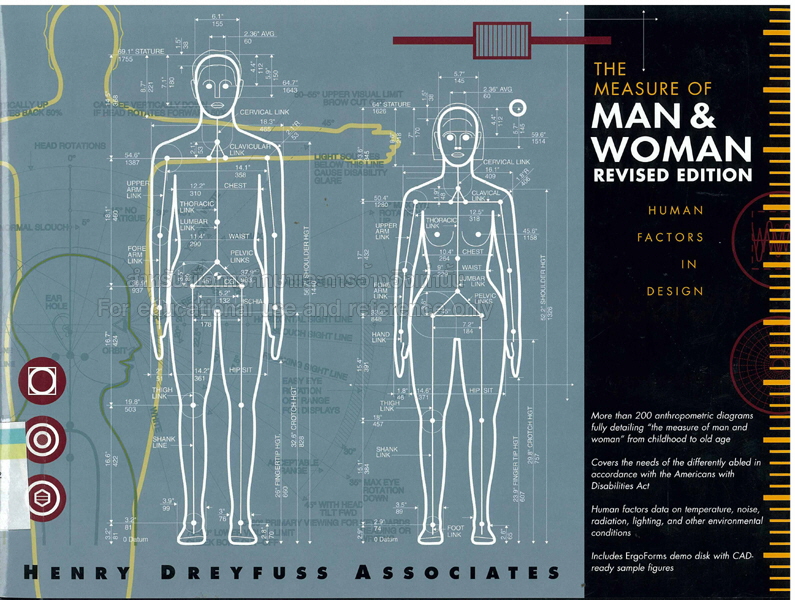 Enter a caption (optional)
Enter a caption (optional)The Measure of Man and Woman: Human Factors in Design
 Enter a caption (optional)
Enter a caption (optional)-
o14Favorite This
-
Q7Comment
K
{Welcome
Create a Core77 Account
Already have an account? Sign In
By creating a Core77 account you confirm that you accept the Terms of Use
K
Reset Password
Please enter your email and we will send an email to reset your password.





Comments
Is that neutral position, to have the elbows so far in front of the torso? Seems kinda like unnecessary stress on the deltoids. Earnestly asking.
Thanks for this post. Very timely, I've started thinking through a seating project and am getting some good ideas here.
I worked in seating for years. The CMD device developed by Herman Miller was an invaluable tool. It was the only way to accurately measure chair dimensions for BIFMA, EN standards etc....
Thanks for the extensive list! One source that cannot be missing is dined.io.tudelft.nl/en, a large collection of anthropometric data from Delft University of Technology that can be accessed with a free account.
There is an extensive software collection of human measurements called PeopleSize.
I have no affiliation.
http://openerg.com/psz/
Thanks for this article, I am taller than average so I find most furniture not as comfortable as it should be. If you felt so inclined an article about the limited options for vehicles for those of us that are outside the 80 percentile would be interesting.
Very usefull all-in-one material. Just gonna translate dimensions to metric and use it when will forget.